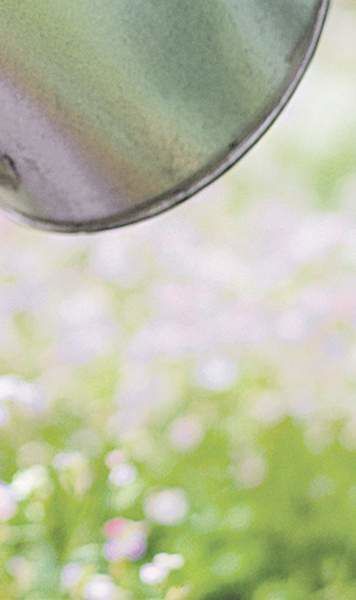Watering plants: how and when
Published 5:00 am Tuesday, July 19, 2011

- Though the watering can may have some charm, if you’re watering at night, consider soaker hoses.
It’s impossible to tell how much rain we will be getting this summer, and we know the sun worshippers and die-hard gardeners need to find a happy medium between them of sun and rain.
What can we as gardeners do to help Mother Nature out should she turn the faucet off? Here’s a checklist:
New plant purchases
If you are considering adding to your existing landscape or this is the year to start from scratch and plant, keep the old adage “marry the plant to the location” in mind. Plants that are matched to their preferred soil, moisture and exposure requirements require little gardener intervention to thrive. For example, do not plant ferns in a dry location and full sun; you will be there morning, noon and night trying (and unsuccessfully I might add) to satisfy that plant’s needs.
Same holds true for a plant that requires well-drained soil and despises “wet feet,” such as lavender or Daphne. If you plant them where the soil is consistently moist, they will prove to you over and over again that they are not happy in that location.
Mulching
If you mulch, you will kill three birds with one stone. For starters, the soil below will retain moisture and stay cooler because evaporation will be reduced (the sun won’t be hitting it). Then there’s the beauty of far fewer weed seeds germinating because the layer of mulch will exhaust their stored food supply before they reach the surface.
The trick here is the depth of the mulch. When applying for the first time, the rule of thumb is three inches maximum. Here, more is not better; when we over-mulch, the mulch acts as a rain barrier. Its weight compacts on itself and a barrier forms, keeping the rain from being able to penetrate.
Compacted mulch will display a thin white mold line (the moisture barrier) about halfway down if you dig an area and look. This is why even if you aren’t adding mulch; it’s recommended you scuff existing mulch once a year.
If you want to apply a top layer to freshen your beds, either make it thin so the 3-inch rule is not violated or scuff the old into the soil to decompose and add to the organic matter, rake smooth and then apply a new layer of mulch.
Keep in mind, stone mulch absorbs heat as does the really dark bark mulch. There is nothing wrong with using them, just be aware of their tendencies. For example, stone mulch heats up so well, it works great for weed-free walkways (the seedlings bake from the heat).
For our school garden at Hoosic Valley, N.Y., the kids are going to spread straw (not hay; it contains weed seeds) around the plants. This will actually serve a number of purposes; again it will restrict evaporation so the soil stays cooler and retains moisture longer, it will help control weeds and it will help keep their prized harvests from coming in direct contact with the ground, which helps to deter insects from burrowing up inside and rot from occurring.
Watering techniques
When to water is the age old question. Even though early morning or late afternoon has always been the recommendation, how you water gives you a bit more freedom to that schedule. What you need to remember is, the foliage should have enough time to dry before nightfall, and so if you are watering overhead with sprinklers, then you must aim for a time-frame where your plant’s leaves are able to dry before dark. Wet foliage is an invitation to both insects and disease.
If watering at night is your only opportunity, consider soaker hoses that weep moisture rather than spray. This style of soaker hose can basically be used whenever watering is convenient for the gardener since the water is directed at the root zone.
Another drawback to overhead watering is the amount of water lost to evaporation. For lawns there is no alternative but a perennial bed with an overhead sprinkler has been found to lose well over 50 percent of the water applied to evaporation either on the leaves or before it’s ever able to cascade down to the soil level from the perennial’s canopy. Over the course of a growing season this can tally up to a substantial amount of wasted water.






